For the 2025 school year, there is 1 public middle school serving 724 students in Churchill School District. This district's average middle testing ranking is 3/10, which is in the bottom 50% of public middle schools in Nevada.
Public Middle School in Churchill School District have an average math proficiency score of 17% (versus the Nevada public middle school average of 27%), and reading proficiency score of 36% (versus the 45% statewide average).
Minority enrollment is 40% of the student body (majority Hispanic), which is less than the Nevada public middle school average of 72% (majority Hispanic).
Overview
This School District
This State (NV)
# Schools
7 Schools
223 Schools
# Students
3,282 Students
152,135 Students
# Teachers
156 Teachers
5,989 Teachers
Student : Teacher Ratio
21:1
21:1
District Rank
Churchill School District, which is ranked within the bottom 50% of all 20 school districts in Nevada (based off of combined math and reading proficiency testing data) for the 2021-2022 school year.
The school district's graduation rate of 80% has increased from 73% over five school years.
Overall District Rank
#13 out of 20 school districts
(Bottom 50%)
(Bottom 50%)
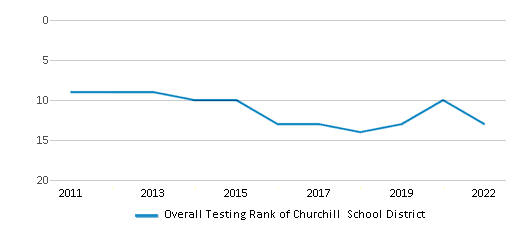
Math Test Scores (% Proficient)
23%
28%
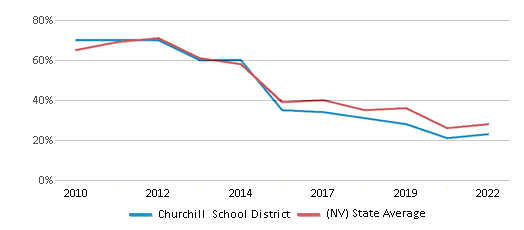
Reading/Language Arts Test Scores (% Proficient)
38%
44%
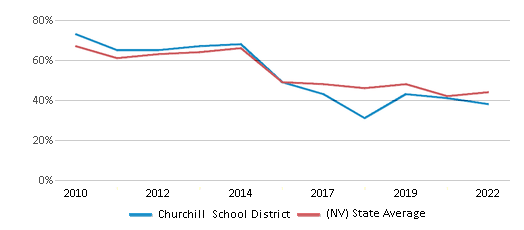
Science Test Scores (% Proficient)
24%
26%
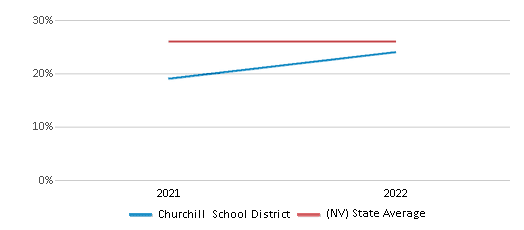
Graduation Rate
80%
82%
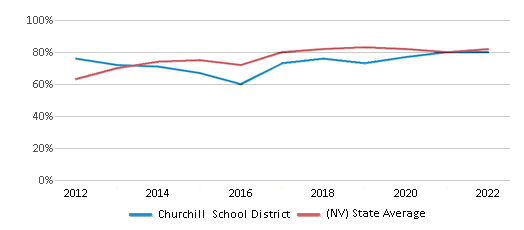
Students by Ethnicity:
Diversity Score
0.60
0.71
# American Indian Students
159 Students
1,157 Students
% American Indian Students
5%
1%
# Asian Students
42 Students
9,370 Students
% Asian Students
1%
6%
# Hispanic Students
867 Students
66,431 Students
% Hispanic Students
26%
44%
# Black Students
45 Students
18,060 Students
% Black Students
1%
12%
# White Students
1,914 Students
42,810 Students
% White Students
57%
28%
# Hawaiian Students
27 Students
2,283 Students
% Hawaiian Students
1%
1%
# Two or more races Students
281 Students
11,899 Students
% of Two or more races Students
9%
8%
Students by Grade:
# Students in PK Grade:
105
355
# Students in K Grade:
225
4,048
# Students in 1st Grade:
220
4,357
# Students in 2nd Grade:
244
4,415
# Students in 3rd Grade:
221
4,400
# Students in 4th Grade:
223
4,519
# Students in 5th Grade:
231
4,920
# Students in 6th Grade:
256
34,882
# Students in 7th Grade:
239
36,619
# Students in 8th Grade:
229
36,952
# Students in 9th Grade:
276
4,434
# Students in 10th Grade:
296
4,438
# Students in 11th Grade:
270
4,174
# Students in 12th Grade:
246
3,431
# Ungraded Students:
1
191
District Revenue and Spending
The revenue/student of $13,637 is higher than the state median of $12,085. The school district revenue/student has stayed relatively flat over four school years.
The school district's spending/student of $12,140 is less than the state median of $12,248. The school district spending/student has stayed relatively flat over four school years.
Total Revenue
$45 MM
$5,795 MM

Spending
$40 MM
$5,873 MM
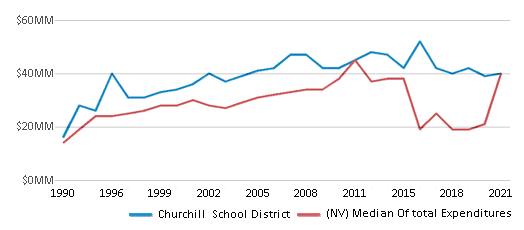
Revenue / Student
$13,637
$12,085
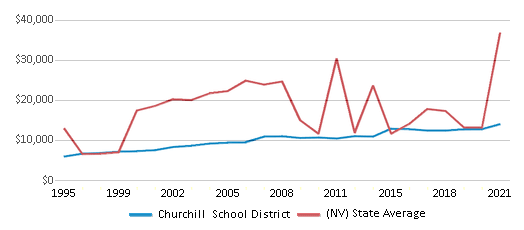
Spending / Student
$12,140
$12,248
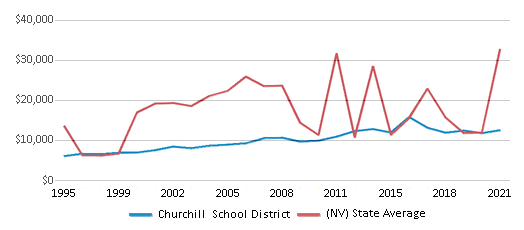
Best Churchill School District Public Middle Schools (2025)
School
(Math and Reading Proficiency)
(Math and Reading Proficiency)
Location
Grades
Students
Rank: #11.
Churchill County Middle School
(Math: 17% | Reading: 36%)
Rank:
Rank:
4/
Bottom 50%10
650 South Maine Street
Fallon, NV 89406
(775) 423-7701
Fallon, NV 89406
(775) 423-7701
Grades: 6-8
| 724 students
Recent Articles

Year-Round Or Traditional Schedule?
Which is more appropriate for your child? A year-round attendance schedule or traditional schedule? We look at the pros and cons.

Why You Should Encourage Your Child to Join a Sports Team
Participating in team sports has a great many benefits for children, there is no doubt. In this article you will learn what those benefits are.

White Students are Now the Minority in U.S. Public Schools
Increasing birth rates among immigrant families from Asia and Central and South America, combined with lower birth rates among white families, means that for the first time in history, public school students in the United States are majority-minority. This shift in demographics poses difficulties for schools as they work to accommodate children of varying language abilities and socio-economic backgrounds.





